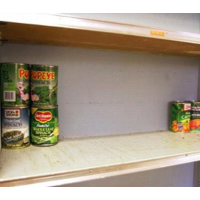As Big Agricultural Companies Exploit Growing Biofuel Market, Emergency Food Pantries See Loss of Stocks

This year has been a good one for farmers selling their crops overseas. But 2012 also has been a struggle for food pantries trying to feed the poor.
Between the bad drought this year and rising demand for food in other countries, U.S. agricultural producers have enjoyed record high prices for their crops.
For corn growers, the vast majority of their yields don’t even go to feeding Americans. About 40% of the corn crop gets turned into ethanol, and another 40% is used as animal feed, leaving only 20% for people to eat.
Food crises overseas prompted the United Nations in August to call upon the U.S. to cease using so much of its corn for biofuels. But Agriculture Secretary Tom Vilsack rejected this suggestion out of concern that to do so would cause higher gasoline prices and job cuts in ethanol production for Americans.
The reality, though, is that many Americans are enduring joblessness and struggling to feed themselves, forcing them to rely on food banks for help.
But with so many farmers exporting their crops this year, nonprofits have experienced a significant drop in food stocks.
For instance, the Capital Area Food Bank, the central supplier of food for more than 700 pantries and nonprofit groups in the Washington, DC, area, has seen government food donations plummet 38%, representing a loss of about 1.5 million pounds of food.
-Noel Brinkerhoff
To Learn More:
Cupboards Bare at Area Food Pantries as Government Donations Drop and Need Rises (by Annie Gowen, Washington Post)
US Drought Batters Farmers as World Food Looms (Common Dreams)
UN Calls on U.S. to Halt Biofuel Production as Drought Devastates Corn Crop (by Matt Bewig, AllGov)
- Top Stories
- Unusual News
- Where is the Money Going?
- Controversies
- U.S. and the World
- Appointments and Resignations
- Latest News
- Trump to Stop Deportations If…
- Trump Denounces World Series
- What If China Invaded the United States?
- Donald Trump Has a Mental Health Problem and It Has a Name
- Trump Goes on Renaming Frenzy






Comments